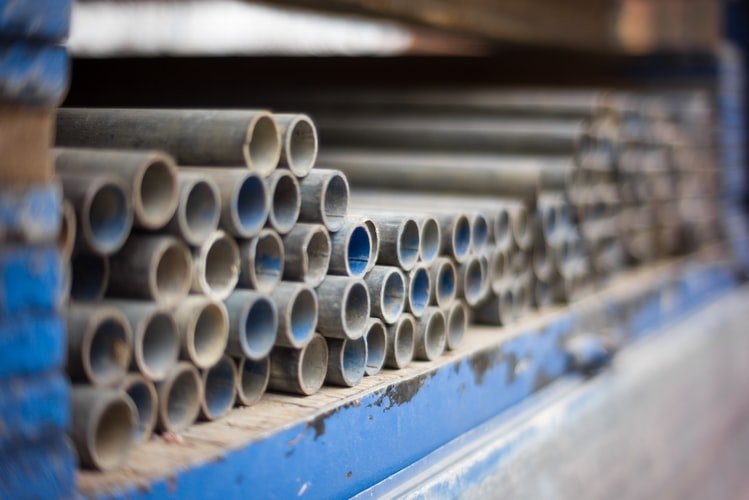The fact that stainless steel items are corrosion resistant distinguishes them from normal steel. Even while there are other distinctions, none are as significant for the stainless steel sector as this one. Stainless steel goods are increasingly widely used, but do you know what makes stainless steel so corrosion-resistant?
The metal known as nickel is the answer. Nickel is a robust, brilliant, brilliant white metal that is a part of our daily lives and may be found in everything from TV remote batteries to hardened steel kitchen sinks. If you ask any stainless steel manufacturer they’ll tell you that without nickel, the industry would collapse. Nickel is used in the majority of stainless steel varieties. Nickel contributes to stainless steel’s corrosion resistance in addition to several other ways.
Stainless steel accounts for more than two-thirds of world nickel output. Nickel also improves essential qualities like formability, weldability, and ductility while also boosting corrosion resistance in some applications when used as an alloying element.
Nickel-containing stainless steels are easy to shape and weld, and they stay ductile at extremely low temperatures while still being suitable for high-temperature applications. They are also non-magnetic, unlike normal steel and non-nickel-containing stainless steel. As a result, they may be turned into an incredibly diverse spectrum of goods, with applications in the chemical industry, health care, and even household purposes. Nickel is so crucial, in fact, that nickel-containing grades account for 75% of stainless steel manufacturing. Type 304, which contains 8% nickel, and Type 316, which contains 11% nickel, are the most well-known of them.
At practically all temperatures, nickel changes the crystal structure of the steel to an austenitic (face-centered cubic crystal) structure, which gives these qualities. At room temperature, conventional steel has a ferritic (body-centered cubic crystal) structure. These special qualities are imparted by the addition of sufficient nickel – generally 8-10 percent
Nickel in the Stainless Steel Industry:
There are several advantages to using nickel in the stainless steel industry. The addition of chromium to steels would primarily diminish the hardness of the material. The nickel compensates for the loss of hardness. Chromium may also generate steel ferromagnetism, which is only useful in a few cases. Nickel can also aid in the solution of such issues.
The majority of the world’s primary nickel stockpile is used to make stainless steel. The “stainless” character of stainless steel is mostly due to the presence of chromium, although nickel is an incredibly important component of stainless steel. Nickel is necessary for keeping the metal corrosion-free and allowing it to resist high temperatures. Nickel reduces the rate at which steel corrodes and so enhances its acid reduction resistance. Nickel is found in more than half of the stainless steel manufactured each year.
According to The Nickel Institute, the main goal of adding nickel is to ensure that steel remains intact at room temperatures and lower. This gives stainless steel its ductility and durability. The most common stainless steel composition is 8 percent nickel and 18 percent chromium. In this category, steel has excellent stretch shaping abilities. If the nickel percentage is somewhat greater, the metal’s dependability increases even more.
The addition of chromium to steel may impair its durability. However, nickel is to blame for the drop. However, chromium can cause steel ferromagnetism, which is undesirable in many applications. Nickel should get rid of these problems.
The properties of nickel-containing stainless steel:
Formability:
Stainless steels have excellent ductility and formability due to their austenitic structure. The standard 18% chromium/8% nickel Type 304, in particular, has excellent stretch-forming properties. A little increased nickel concentration improves austenite stability and lessens work-hardening tendency, making it more suitable for deep drawing. These alloys, unlike low-nickel, high-manganese alloys, are not susceptible to delayed cold cracking. Because of their outstanding formability, 300-series austenitic alloys are commonly employed in kitchen sinks and cooking pots.
Weldability:
Welding is used to making a lot of stainless steel equipment. In general, nickel austenitic alloys are superior for welding to other alloys, with Types 304 and 316 stainless plates of steel being the most extensively produced in the world. They are not brittle due to high-temperature grain development, unlike ferritic alloys, and the welds have good bend and impact qualities. Both thick and thin parts may be easily welded.
Toughness:
Toughness, or a material’s capacity to absorb energy without breaking, is critical in a variety of engineering applications. At normal temperatures, most stainless steels are durable; however, when the temperature drops, the ferritic structure becomes increasingly brittle, rendering ferritic stainless steels unsuitable for cryogenic temperatures. Common austenitic stainless steels, on the other hand, retain high toughness even at liquid helium temperatures (-270oC), which is why grades like Type 304 are commonly utilized in cryogenic applications.
High-Temperature Properties:
The addition of nickel increases the high-temperature strength of austenitic stainless steel alloys, notably their capacity to resist creep, or the propensity to move slowly or deform permanently under mechanical forces. When subjected to temperatures above 300oC, these alloys are also less likely to produce destructive brittle phases.


Recent Comments